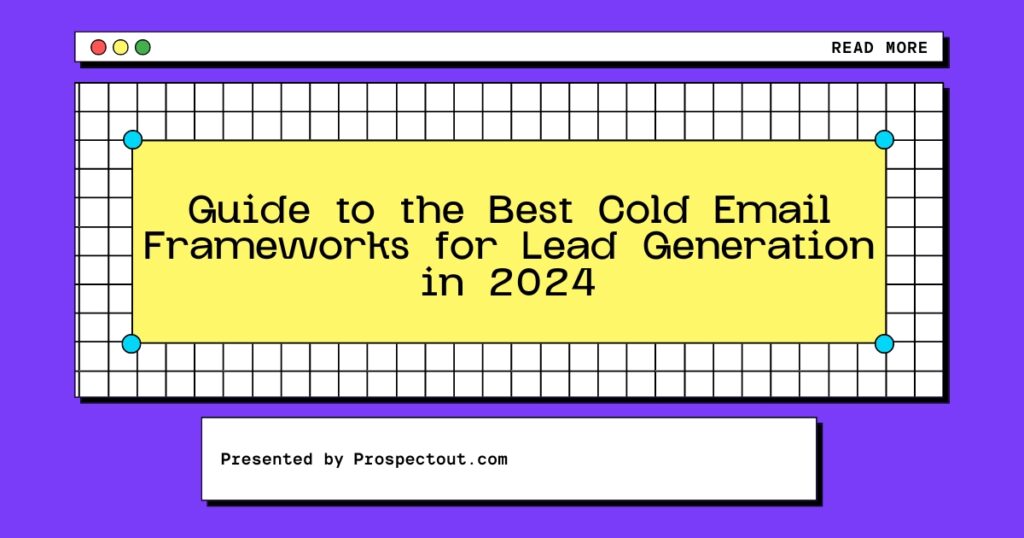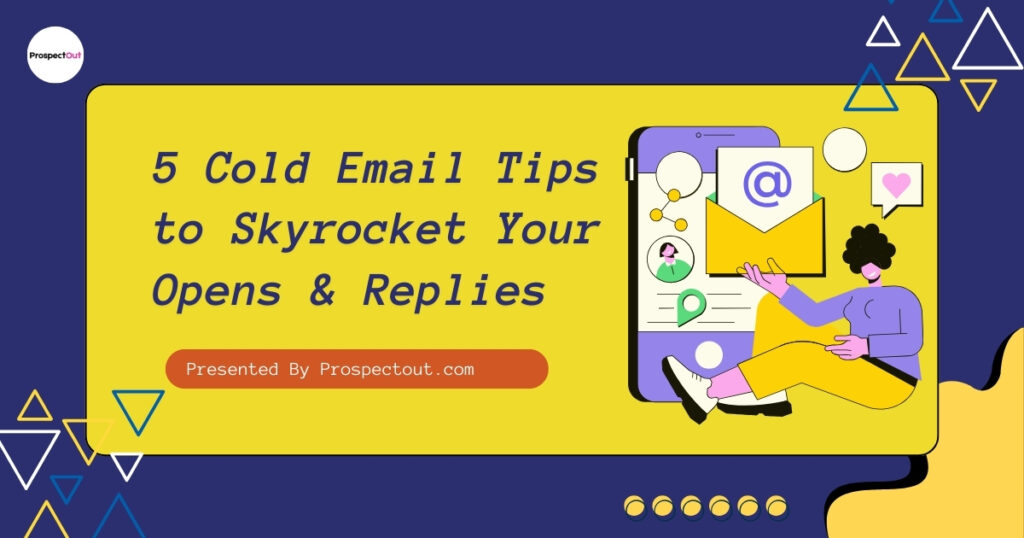
To write effective cold emails that generate better leads, use proven frameworks like AIDA, PAS, and the 3B method. Keep your emails personalized, concise, and value-driven, addressing the recipient’s needs. Include clear CTAs and make follow-ups part of your strategy.
Table of Contents
What Are Cold Email Frameworks?
Cold email frameworks are systematic methods to write cold emails that capture recipients’ interest and generate a reply. These frameworks are made to avoid the spam traps that most unsolicited emails fall into, all while grabbing attention, establishing relevance, and motivating action.
Because they provide companies with a direct channel of communication with potential leads, cold emails are extremely effective. Creating a message that stands out from the crowd and captures the recipient’s interest, however, is a challenge. This is where frameworks come into play; they help you craft communications that are well-targeted, compelling, and transparent.
Why Is Cold Email Important for Email Marketing?
Sending out cold emails can help you grow your client base, establish new business contacts, and ultimately boost sales. When done correctly, cold emailing can feel both personal and non-intrusive, unlike cold calling, which may feel intrusive.
It’s actually among the most efficient methods of generating leads and converting them into paying clients. You can find more insights in our detailed cold email strategy guide.
Key Components of Cold Email Frameworks
The best cold email frameworks have a few key components in common. By mastering these elements, you’ll ensure that your emails are well-received and prompt action from the reader.
Personalization – Tailor the email to the recipient. Use their name, mention specific pain points, or highlight a mutual
Clear Subject Line – This is your first chance to grab attention. Make it compelling but not clickbait.
Engaging Opening – Start with a hook that resonates with the recipient’s needs or interests. Skip the long intros about who you are.
Value Proposition – Highlight what’s in it for them. What solution are you offering? What problem can you solve for them?
Call to Action (CTA) – End with a clear next step. Whether it’s booking a call, replying to an email, or downloading a resource, make it easy for them to act.
Follow-up Strategy – Sending one cold email rarely works. Have a polite, persistent follow-up strategy.
How to Write a Cold Email That Actually Works?
Here’s a quick blueprint for writing a cold email that gets results:
Subject Line: Keep it short, under 50 characters. Avoid buzzwords like “free” or “urgent,” which may trigger spam filters. Try something like: “Quick Question About [Their Business].”
Opening Line: Personalize from the start. Mention something relevant about their business or their role. “I noticed you’re working on expanding your [X]—I have an idea that might help.”
Body: Keep it under 100 words. Focus on their pain points and how you can help solve them. Use simple, direct language and avoid industry jargon.
Value Proposition: Clearly explain what you’re offering. Focus on the benefits, not features. “Our solution has helped companies like [Similar Business] increase their [KPI] by [X] percent.”
Call to Action: Keep it easy. “Would you be open to a quick 10-minute call next week to discuss how we can help?”
Follow-Up: Send polite reminders. Space them out over a week or two, ensuring each email adds value.
For more details on how to scale cold email outreach while avoiding blacklists, check out our guide on sending bulk cold emails without getting blacklisted.
5 Cold Email Frameworks to Boost Your Response Rates
1. AIDA (Attention, Interest, Desire, Action)
The AIDA model is one of the oldest and most effective sales frameworks. It is a copywriting model that guides you through attracting attention, sparking interest, building desire, and prompting action in your messaging.
How it works:
- Attention: Grab attention with a personalized subject line.
- Interest: Build interest by addressing a specific problem they have.
- Desire: Explain how your solution can benefit them.
- Action: Close with a simple and clear CTA.
2. PAS (Problem, Agitate, Solve)
PAS is great for quickly highlighting the pain point and positioning your solution. This is a persuasive copywriting technique that highlights a problem, agitates the pain it causes, and offers a solution to resolve it.
How it works:
- Problem: Identify the recipient’s main challenge.
- Agitate: Highlight the consequences of not solving this issue.
- Solve: Present your solution as the perfect remedy.
3. 3B Framework (Blunt, Benefit, Brief)
3B Framework is a behavior change model that focuses on identifying key behaviors, reducing barriers, and amplifying benefits to drive user action.
How it works:
- Brief: Keep the email concise.
- Blunt: Be direct—cut to the chase.
- Benefit: Highlight what’s in it for them.
4. BAB (Before, After, Bridge)
The BAB framework leverages storytelling to make your cold email more engaging and persuasive, helping you connect with your target audience on a deeper level.
How it works:
- Before: Describe what their current situation looks like.
- After: Show what their situation could look like after using your product or service.
- Bridge: Explain how to get from the “before” to the “after.”
5. The ‘ Persona-Based’ Cold Email Framework
This framework is highly effective in building personal connections with prospects.
Seeking out prospects who like you or your team in characteristics or past experiences facilitates the development of empathy and greater understanding.
How it works:
- Call to Action: Conclude by extending an invitation to your prospect to talk about how your solutions and common experiences might help them.
- Identify Common Characteristics: You must locate prospects who, like you or your team members, have comparable positions, difficulties, or industry experience.
- Personalize Your Email: Write your email by pointing out these similarities and outlining how your experiences together can assist in resolving their issues.
- Highlight Your Resolution: Make a clear case for how your product or service can address their particular problems, drawing on your personal experiences to support your claims.
FAQ About Cold Email Frameworks
What is a cold email framework?
A cold email framework is a guide that helps you write emails that get attention and responses. It makes your emails more targeted and effective.
How can I improve my cold email open rates?
To improve open rates, use a short, personalized subject line. Avoid spammy words like “free” and send emails at the right time.
How many cold emails does it take to get a response?
It often takes 5 to 7 emails to get a response. Consistent follow-ups are key to getting replies.
What are the key components of a successful cold email?
A good cold email has a personalized subject, short intro, clear value, and a strong call to action. Follow-up emails also help.
How can I avoid cold emails going to spam?
To avoid spam, clean your email list, use proper authentication, and avoid spammy words. Segmenting your list also helps. For more tips, check out our detailed guide on how to avoid emails going to spam.
Conclusion
Cold emails are a very efficient way of generating as many leads as possible and creating potential partnerships. If you choose any of the frameworks mentioned above, it will be easier for you to enhance your response rates in your outreach list.
If you’re looking for expert assistance with your cold email campaigns, explore our list building service to enhance your outreach strategy and connect with the right prospects.
Thank you for reading! If you are interested in more information on email marketing, you may consider other posts I made on lead generation and sales funnels.


